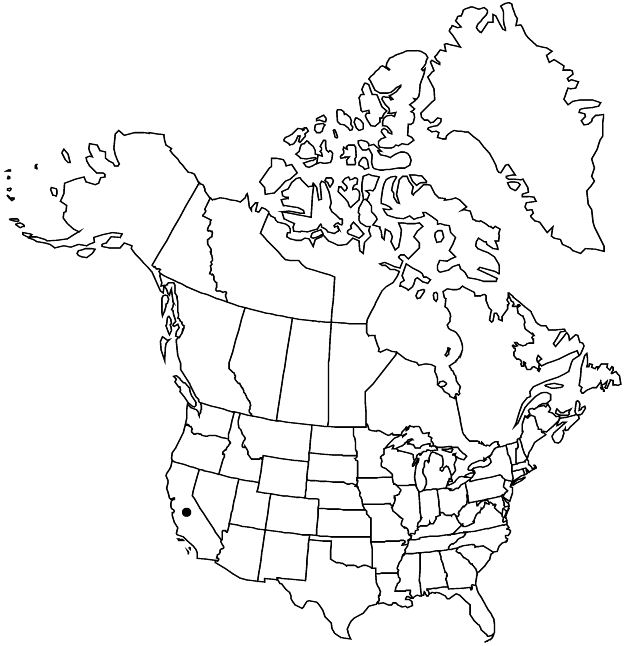Malacothamnus fremontii
Leafl. Bot Observ. Crit. 1: 208. 1906.
Subshrubs or shrubs, 0.5–2(–3) m, branches stout or slender, indument white, sparsely to densely woolly, stellate hairs stalked, 20–30-armed, glandular hairs often abundant. Leaf blades ovate, broadly ovate, suborbiculate, or reniform, 3- or 5-lobed, 4–6(–11) cm, thin or thick, surfaces: adaxial white, densely velvety-tomentose or green, sparsely hairy, basal sinus open, not overlapping. Inflorescences interrupted, spicate or narrow- or, rarely, open-paniculate, flower clusters sessile or pedunculate, 6–10-flowered; involucellar bractlets subulate to filiform, 3–12(–15) × to 0.5 mm, 1/3–1 1/3 times calyx length. Flowers: calyx campanulate, 5.5–13 mm, lobes usually narrowly triangular, 3–10 × 1–4 mm, ca. 2–3 times as long as wide, ± equaling to 3 times tube length, apex acute or short-acuminate, densely white-lanate; petals pale pink, to 1.8 cm. Mericarps 2.5–4 mm. 2n = 34.
Phenology: Flowering Apr–Jun.
Habitat: Chaparral, lower margins of pine woodlands
Elevation: 50–2800 m
Discussion
Malacothamnus fremontii occurs about the Central Valley in the inner Coast Ranges, Sierra Nevada, and Transverse Ranges. In the northern Coast Ranges, plants with calyx measurements in the lower range have been recognized as M. helleri or Sphaeralcea fremontii var. exfibulosa; plants with a more southerly distribution and measurements in the upper range have been called M. howellii or M. fremontii subsp. cercophorus; these forms occur elsewhere in the range of M. fremontii. In the Transverse Ranges, plants are generally less woolly (M. orbiculatus) and may intergrade with M. fasciculatus.
Selected References
None.
